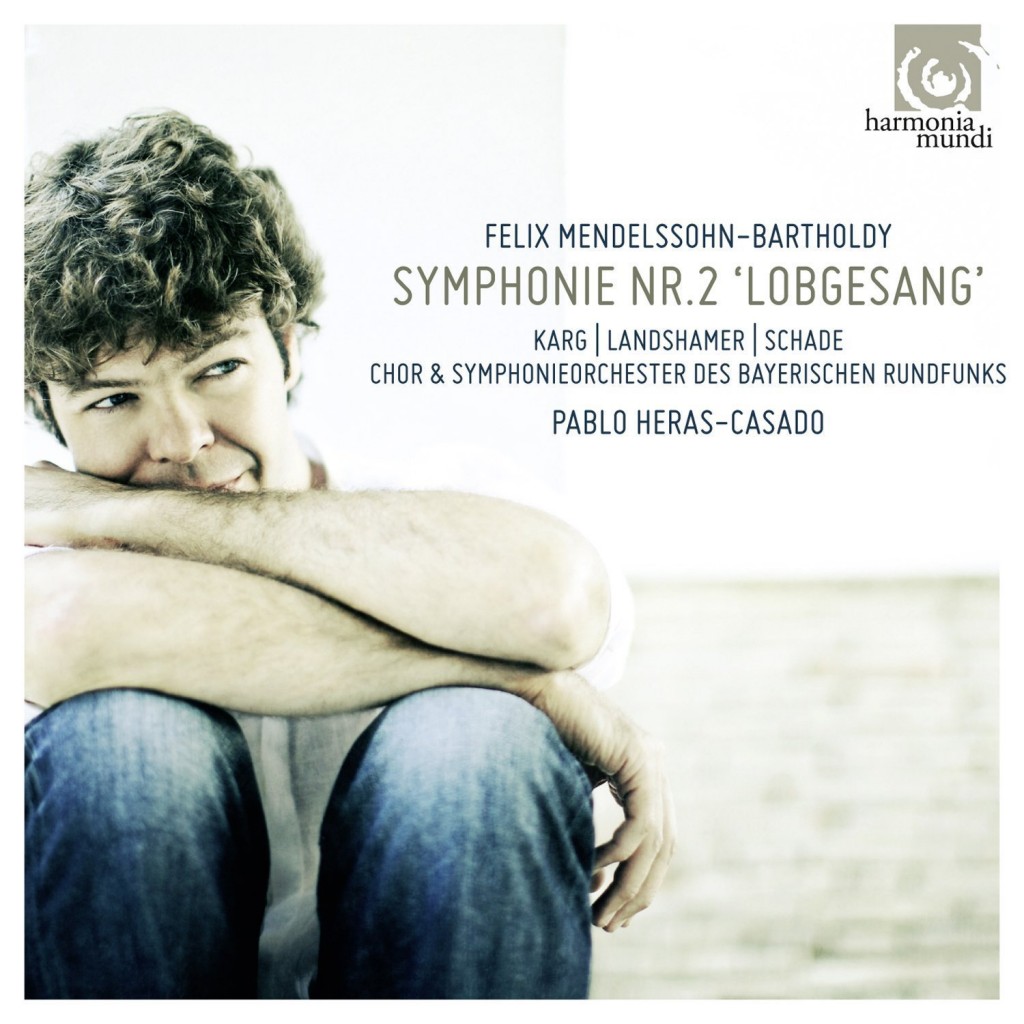Mendelssohn: Symphony No. 2 “Lobgesang”
Christiane Karg and Christina Landshamer, sopranos/Michael Shade, tenor
Bavarian Radio Symphony Orchestra and Chorus/Pablo Heras-Casado
Harmonia Mundi HMC 90251 (61:48)
Mendelssohn’s Symphony No. 2 is one of those odd hybrid pieces – Beethoven’s Ninth Symphony is another – combining purely instrumental and choral movements. In such cases listeners are often unsure whether they are dealing with a symphony or an oratorio. But there are no laws – musical or otherwise – about such things, and its hybrid nature has certainly not affected the popularity of Beethoven’s Ninth Symphony.
Mendelssohn’s “Hymn of Praise” symphony is far less often played, perhaps because it lacks anything comparable to the “Ode to Joy” tune. But it is a fine piece in its own right with lots of beautiful melody and some rousing choruses. This new recording from Munich is excellent and may win new friends for the piece. The chorus sings fantastically well, particularly in the exuberant and joyful “Die Nacht ist vergangen” (The night is past), the orchestra is one of the best in the world, and the soloists are good too. Special kudos to Canadian tenor Michael Schade for his sensitive work in his ‘Watchman’ aria.
The 36-year-old Spanish conductor Pablo Heras-Casado obviously loves the piece and builds the climaxes with understanding and energy.
But I do have some reservations. My benchmark for this symphony remains the 1972 DG recording by Karajan and the Berlin Philharmonic. Compare the opening bars in the two recordings. The work opens with trombones intoning the thematic germ of the entire piece. Heras-Casado takes it at a jaunty pace then goes even faster in the main body of the first movement. Karajan, by contrast, gives the theme the weight and gravitas it deserves and maintains a moderate tempo for the rest of the movement that allows the thematic development to unfold naturally. I hear foreshadowings of Bruckner and Schumann in the Karajan approach; Heras-Casado makes me think of Rossini, and not in a good way.
My impression is that Heras-Casado is paying too much attention to his ‘historically informed’ mentors and too little to the character of the music. And, by the way, Mendelssohn’s tempo marking for the first movement is “Maestoso con moto.”
Heras-Casado is a busy man. He conducts Monteverdi’s Orfeo at the Dutch National Opera in September, and Carmen at the Met in October. For more about this widely praised young conductor visit his website at www.pabloherascasado.com.
Paul E. Robinson
Paul Robinson is the author of Herbert von Karajan: the Maestro as Superstar, and Sir Georg Solti: His Life and Music. For friends: The Art of the Conductor podcast, “Classical Airs.”
- SCRUTINY | TSO Lets Berlioz Do The Talking In Season Opener - September 21, 2018
- RECORD KEEPING | Even Yannick Nézet-Séguin Can’t Make Us Love Mozart’s La Clemenza di Tito - September 6, 2018
- RECORD KEEPING | Giovanna d’Arco With Anna Netrebko Explains Why The Best Operas Survive - August 30, 2018




